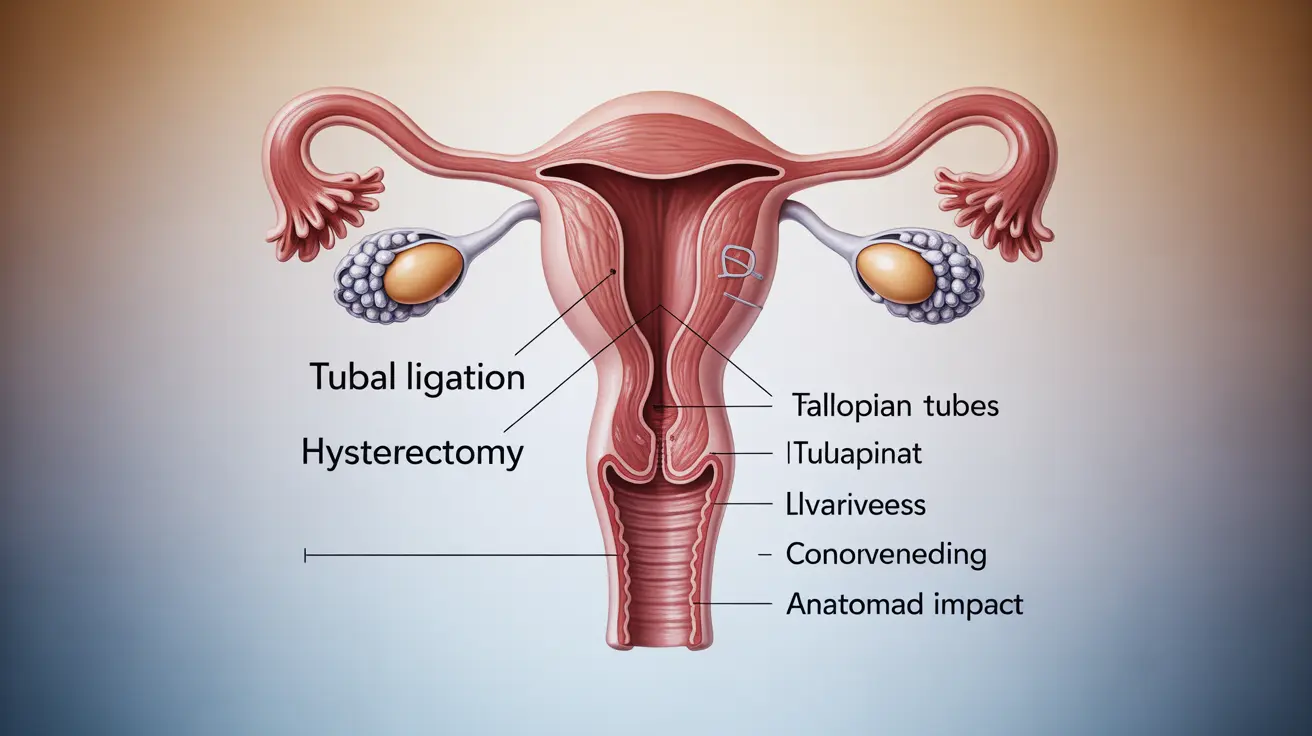When considering permanent birth control options, many women find themselves weighing the differences between having their tubes tied (tubal ligation) and undergoing a hysterectomy. While both procedures offer permanent contraception, they differ significantly in their approach, recovery time, and long-term effects on your body. Understanding these differences is crucial for making an informed decision about your reproductive health.
This comprehensive guide will help you understand the key differences between these procedures, their impacts on your body, and what to expect during recovery, enabling you to have an informed discussion with your healthcare provider about which option might be right for you.
Understanding the Basic Differences
Tubal ligation is a surgical procedure that blocks or cuts the fallopian tubes, preventing eggs from reaching sperm while preserving your reproductive organs. In contrast, a hysterectomy involves removing the uterus entirely, and sometimes additional reproductive organs depending on the type of hysterectomy performed.
The fundamental difference lies in the extent of the surgery: tubal ligation is generally less invasive and preserves your natural hormone production and menstrual cycle, while a hysterectomy is a major surgery that permanently removes your ability to carry a pregnancy and ends menstruation.
Procedural Differences and Approaches
Tubal Ligation Procedure
During tubal ligation, a surgeon will either:
- Make small incisions in your abdomen for laparoscopic surgery
- Clip or cut the fallopian tubes
- Seal the tubes using various methods
- Complete the procedure in about 30 minutes
Hysterectomy Procedure
A hysterectomy may be performed through:
- Vaginal approach
- Abdominal surgery
- Laparoscopic method
- Robotic-assisted surgery
Recovery and Healing Process
The recovery timeline varies significantly between these procedures. Tubal ligation typically allows patients to return home the same day, with a recovery period of 1-2 weeks. Most women can resume normal activities within days, though heavy lifting should be avoided initially.
Hysterectomy recovery is more extensive, requiring:
- 2-6 weeks of recovery time
- Restricted physical activity
- Longer hospital stay (1-3 days)
- More intensive follow-up care
Impact on Hormones and Menstruation
Understanding the hormonal impacts is crucial. Tubal ligation doesn't affect hormone production or menstruation, as your ovaries continue functioning normally. However, a hysterectomy will end menstruation permanently, and if the ovaries are removed (oophorectomy), it will trigger immediate menopause.
Risks and Benefits Comparison
Tubal Ligation Benefits
- Less invasive procedure
- Shorter recovery time
- Maintains natural hormone production
- Preserves menstrual cycle
- Highly effective birth control
Hysterectomy Benefits
- Permanent solution for certain medical conditions
- Eliminates risk of uterine cancer
- May resolve severe menstrual problems
- Can address multiple reproductive health issues simultaneously
Frequently Asked Questions
What's the main difference between tubal ligation and hysterectomy, and which one is right for me?
Tubal ligation blocks the fallopian tubes while preserving all reproductive organs, whereas a hysterectomy removes the uterus entirely. The right choice depends on your medical needs, desired outcome, and whether you have underlying conditions requiring treatment beyond birth control.
How long does it take to recover from tubal ligation vs a hysterectomy, and what should I expect during healing?
Tubal ligation recovery typically takes 1-2 weeks with minimal restrictions, while hysterectomy recovery requires 2-6 weeks with more extensive activity limitations and closer medical monitoring.
Will I still get my period after having my tubes tied or after a hysterectomy?
After tubal ligation, you will continue having regular periods. Following a hysterectomy, you will no longer have menstrual periods as the uterus has been removed.
Can tubal ligation or hysterectomy affect my hormone levels or cause early menopause?
Tubal ligation does not affect hormone levels or cause menopause. A hysterectomy alone won't cause menopause unless the ovaries are also removed, in which case immediate menopause will occur.
What are the risks and benefits of getting your tubes tied versus having a hysterectomy as a form of permanent birth control?
Tubal ligation offers a less invasive option with quicker recovery and maintained hormone production, while hysterectomy provides a more comprehensive solution that may address additional medical conditions but requires more extensive surgery and recovery time.




